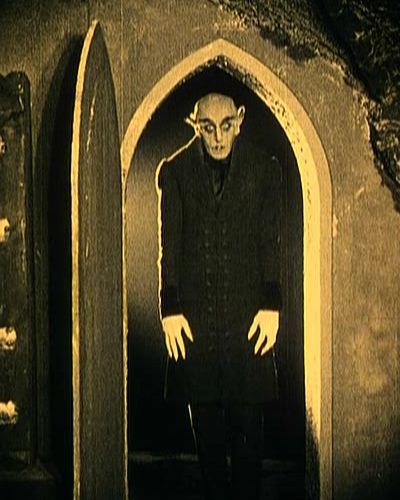Tuesday

Vampires
I have two vampire blurbs today. The first one is the Federal Reserve vampire and its blood-sucking uncle across the pond: the Bank of England. It would appear the two did some illegal things between the two world wars. The relevance? If they did it then, they might be doing it now . . . and always (always) denying it, hence Bernanke's outrage that we might actually want to audit the Fed's books.
"An article written by University of Tennessee professor John R Garrett, "Monetary Policy and Expectations: Market-Control Techniques and the Bank of England, 1925-1931", which describes in exquisite detail the gold falsification measures undertaken by the Bank of England in the interwar period in order to impact interest rates in a favorable direction, performed with the full criminal complicity of the Federal Reserve Bank of New York, may mean paranoid "gold bugs" could soon be forever absolved of their "tin hat" wearing status as outright gold, and other data, manipulation by a major central bank is now proven beyond doubt. The implications regarding the possibility of comparable deceitful and treasonous acts by modern central bankers are staggering."
Read all about here. The paper itself is only 25 pages and can be found here.
The second walking-dead blurb: The metrosexual vampire, by John Miller at National Review: "Defanged." The conclusion:
Just about every accomplished writer of horror has dabbled with vampires. Stephen King's second novel, 'Salem's Lot, published in 1975, is about a small town in Maine and its harrowing encounter with the living dead. In many ways, it's a tradition-bound book: King always has paid homage to his genre predecessors. More important, the story itself is traditional. The plot boils down to a confrontation between good and evil. Human beings are on the side of truth and light while vampires prefer deception and darkness.
About the same time, however, other writers took a different approach. They began to write stories from the perspective of vampires. Anne Rice wasn't the first to do it, but her Interview with the Vampire, released in 1976, became the most popular and influential of the type. It twisted the entire genre around. Suddenly, vampires lobbied for our sympathy. Good? Evil? It's complicated. With Twilight, the transformation is complete. Vampires aren't fiends who threaten us with eternal damnation; they're handsome hipsters whom our daughters want to date.
The trend isn't isolated to vampires. In How the Grinch Stole Christmas!, the 1957 book by Dr. Seuss, the Grinch is cursed with a heart that is “two sizes too small.” This is the only motive he needs to wreak holiday havoc. In the more recent film version starring Jim Carrey, however, the screenwriters invent a background story for the Grinch. It turns out that his rage at the denizens of Who-ville is entirely justified. A similar inversion fuels Wicked, the novel-turned-musical inspired by The Wizard of Oz. It lets the Wicked Witch of the West tell her side of the story. When we see things from her point of view, we learn that she's not malevolent but misunderstood.
The evolution of vampires, Grinches, and witches is a variation on the theme of defining deviancy down. There was a time when we knew a monster when we saw one – and understood that some nasties need to have their heads chopped off and their mouths stuffed with garlic. Nowadays, however, vampirism and its related maladies are just alternative lifestyles. Condemning them is an unforgivable rendering of judgment and a crime against the imperatives of moral relativism. A society that has trouble recognizing monsters in its art probably will have difficulty identifying terrorists at its airports.
And its horror stories will become bloodless. When everybody's perspective is equally valid, vampires lose their bite. We may have gained friends, but we've lost enemies – and a world without enemies is the stuff of a dull utopian fairytale.
